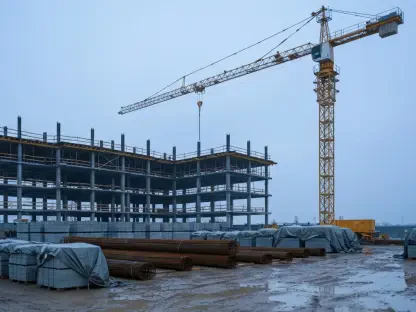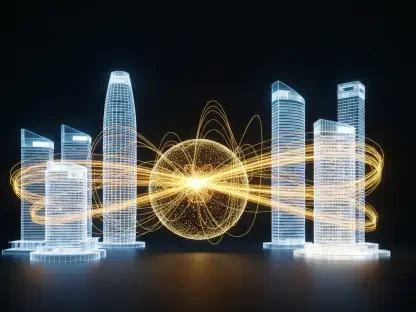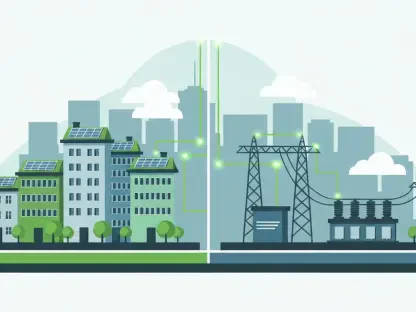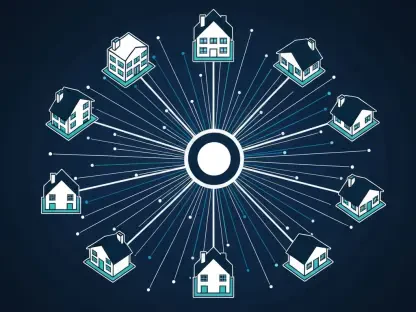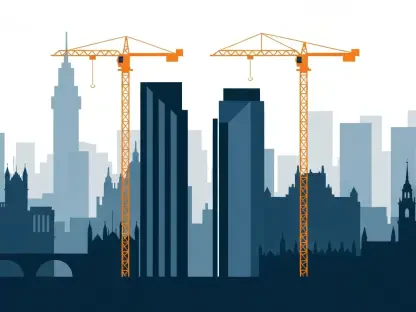Hawaii’s economic landscape, traditionally buoyed by its thriving tourism sector, is experiencing notable shifts as external challenges and internal dynamics redefine primary economic drivers. The tourism slowdown, partly attributed to global uncertainties and changing travel preferences, has seen the construction industry emerge as a pivotal force in the state’s economic strategy. This shift comes at a time when Hawaii must simultaneously navigate recovery from the catastrophic wildfires that devastated parts of Maui in 2023. From residential growth to strategic military investments, construction is increasingly seen as a stabilizing and progressive force for Hawaii’s economy. As the state steps into this new era, understanding the broader implications of construction’s role becomes critical not only for immediate recovery but for fostering long-term resilience and opportunity for the islands.
Growth of Construction Amidst Tourism Slowdown
Hawaii’s economic narrative has long been dominated by tourism, making any disruption in the flow of visitors a concerning trend. The Hawaii Department of Business, Economic Development, and Tourism (DBEDT) has identified a shift toward construction, highlighting this as an essential pillar in the state economy. Although forecasts have adjusted downward due to factors like tariffs and inflation, the construction industry is expected to continue driving economic momentum. James Kunane Tokioka, the DBEDT Director, has projected a recovery in tourism by 2026. However, the immediate reliance on construction as a buffer underscores its newfound significance in economic planning.
Employment within the construction sector has soared, with Hawaii maintaining a robust labor market demonstrated by consistently low unemployment rates. The construction industry accounted for a considerable portion of this stability, reporting around 40,000 construction payroll jobs. This employment surge provides a unique opportunity where the influx of labor into construction activities could offset potential losses in other traditional industries, demonstrating how this sector sustains economic growth amid challenging times. As this trend continues, Hawaii stands to benefit from a diversified economic portfolio, potentially mitigating risks associated with over-reliance on tourism alone.
Labor Market and Employment Stability
The strength of Hawaii’s labor market remains a hallmark of the state’s economic narrative, with the construction industry playing a key role. The state boasts a notable unemployment rate, one of the lowest in the nation, further supported by a surge in payroll job growth within the construction sector. The increase to approximately 40,000 construction jobs underscores the potential of this industry to absorb workforce changes as other sectors fluctuate. This expansion also reflects strategic employment opportunities for local communities, particularly in Maui, which has retained stable construction job metrics following recent challenges.
In Maui, the construction workforce remains resilient amid broader economic uncertainties. Particularly following the devastating fires of 2023, construction jobs have been pivotal in recovery efforts, maintaining critical employment levels on the island. With around 4,800 construction jobs reported early in the year, Maui’s workforce stability in this sector illustrates resilience in recovery planning and execution. As the construction industry anchors economic stability through job creation, it offers both hope and tangible solutions for revitalizing economic health post-disaster. This ongoing stability is crucial to maintain momentum as these islands navigate their unique economic paths.
Infrastructure Development and Strategic Investments
Infrastructure and strategic investments are at the forefront of Hawaii’s economic revival plan. Maui’s wildfires of 2023 highlighted urgent needs for rebuilding and infrastructure enhancements. Significant growth in residential construction is testimony to this, with newly approved units showing a marked increase in recent times. Maui County, trailing only behind Honolulu and Hawai‘i County, exemplifies burgeoning residential project developments, contributing to the broader state’s recovery and growth prospects.
Investment in infrastructure is critical to support these construction endeavors, especially on Maui. The reconstruction aftermath of the wildfires demands extensive resource allocation, where federal disaster relief funding forms a crucial element. Such investments are vital not only to address the immediate reconstruction needs but also to sustainably improve infrastructure – spanning water, roads, and electrical systems. The Maui Capital Improvement budget strategically aligns with these priorities, underscoring public works projects set to drive infrastructure upgrades, supporting robust home construction projects and infrastructural development aligned with modern needs and environmental contingencies.
Strategic Military and Technological Investments
The introduction of significant military investment projects represents another leap forward for Hawaii’s construction industry. A noteworthy example includes the $90+ million construction project at a high-tech park in South Maui. This development is pivotal, intending to establish a Secure Integration Support Lab, which not only benefits the construction industry but also positions Maui as a hub for high-end research and technological development. Such projects hold the potential to create specialized jobs and stimulate economic activity far beyond the traditional construction sphere.
Moreover, this investment underscores a broader strategic push towards diversifying Hawaii’s economy through technological advancements and defense sector innovation. These projects promise to attract a skilled workforce and involve high-level collaborations, potentially positioning Hawaii as a crucial player in national security and technological development. Consequently, the economic and strategic benefits of these investments extend well beyond immediate construction activity, promising long-term contributions to the state’s economic diversification and stability.
Alternative Construction Techniques and Resource Considerations
In light of increased construction demand, Hawaii is exploring innovative building methods and resource management strategies. The interest in alternative construction techniques such as modular homes and mass timber reflects this trend toward efficiency and sustainability. Modular homes offer promise in terms of cost reduction and construction speed, though multiple factors affect their implementation. Mass timber emerges as an appealing option too, offering improved fire resistance and potential cost savings. These innovative construction approaches not only address immediate building needs but also align with broader state goals for environmentally friendly development.
The demand for labor and resources presents challenges, necessitating potential recruitment beyond Hawaii’s borders to manage increased workloads effectively. Federal incentives for local material production and innovative construction techniques are under consideration as methods to enhance cost-effectiveness and efficiency in building. Addressing these supply chain dynamics is essential to maintain momentum in Hawaii’s construction surge, ensuring projects are completed on time while nurturing a sustainable and localized construction ecosystem that benefits the island economy as a whole.
Commitment to Renewable Energy and Environmental Sustainability
Hawaii’s commitment to renewable energy and environmental sustainability represents an integral component of the state’s economic strategy. The rise of solar and wind energy projects signifies promising work opportunities within the green tech sector, supporting the construction industry’s evolution beyond conventional practices. Initiatives involving sustainable water supplies, like desalination strategies, offer long-term solutions for resource management, ensuring that infrastructure developments are resilient and environmentally compatible.
Such renewable energy projects are not only crucial for fulfilling state-wide sustainable energy goals but also bolster the construction industry’s role in achieving these targets. This symbiotic relationship places Hawaii at the forefront of environmentally conscious economic development, appealing to local values and contributing to broader national and global sustainability objectives. As these renewable initiatives continue to mature, they will likely drive further investment and innovation, making the construction industry an essential player in Hawaii’s sustainable future.
Economic Implications Beyond Immediate Recovery
The economic landscape of Hawaii is undergoing a significant transformation, leveraging the construction industry to navigate both current challenges and future opportunities. Construction has emerged not just as a response to economic stagnation and natural disasters but as a strategic element in reimagining and revitalizing Hawaii’s economic pathway. The sector’s capacity to absorb labor market shifts, coupled with its role in technological advancement and sustainable development, highlights its comprehensive impact.
Ultimately, Hawaii’s embrace of construction as a pivotal industry exemplifies a strategic shift toward economic diversification essential for resilience. With continued investments in infrastructure, innovative building techniques, and renewable energy projects, the construction industry paves the way for sustainable growth and enhanced stability. This strategic pivot not only aids immediate post-disaster recovery but also positions the state to thrive amidst global economic changes, suggesting broader implications for economic planning and sustainability in the years to come.


